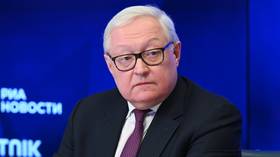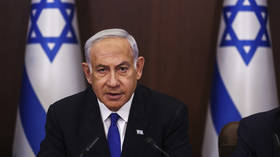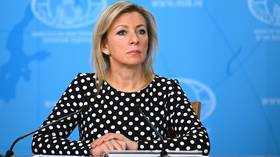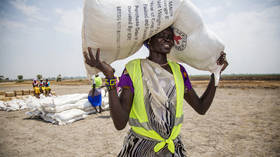Russia responds to new US missile deployment in Asia

US deployment of intermediate-range missiles in the Philippines is another step by Washington towards escalating military confrontation in the Asia-Pacific, Russian ambassador to Washington Anatoly Antonov has said.
Last week, in what the US Army Pacific said was a “landmark” deployment that showcased “the extensive reach and logistical precision” of the American military, a Typhoon Mid-Range Capability (MRC) missile system was flown to the island of Luzon in the Philippines, 250 km from Taiwan. Typhoon systems, which were first introduced in 2023, can fire both the Standard Missile 6 (SM-6) and Tomahawk missiles, with the latter having a range of up to 2,500km.
“The Pentagon’s public demonstration of its capabilities in the Asia-Pacific region for the rapid deployment of missile weapons previously banned under the INF (Intermediate-range Nuclear Forces) Treaty raises deep concern,” Antonov wrote in a post on Telegram.
By delivering a Typhoon system to the Philippines, “the US side is bringing an entire class of destabilizing weapons out of the shadows to ensure its military superiority over opponents,” he stressed.
Such actions by the US signify “another powerful blow to strategic stability,” the ambassador said, adding that “Asia has already accumulated a lot of ‘hot’ material, and the region is rapidly militarizing.”
The US is “purposefully escalating the level of military confrontation and fueling hotbeds of tension” in the Asia-Pacific in an attempt to “return the world to the darkest times of the Cold War and balancing on the brink of a nuclear conflict,” he said.
”We urge the US not to open Pandora’s Box and follow our country’s example by taking all necessary steps to ensure global stability and predictability,” Antonov stated.
The 1987 Intermediate-range Nuclear Forces Treaty (INF) banned Russia and the US from fielding ground-based missiles with a range of between 500km (310 miles) and 5,500km (3,418 miles) in Europe. The US unilaterally withdrew from the deal in 2019. This left Russia no choice but to cease its participation in the INF as well.
However, Moscow introduced a moratorium on fielding weapons that used to be covered by the treaty.
Antonov reminded that this moratorium “has clear conditions: we will not deploy such systems until similar US-made systems appear in any region of the world.” But if it happens, “all responsibility for a new surge of tension in the world will fall on Washington,” he stressed.













